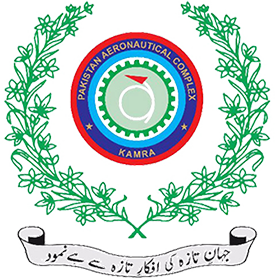
The Saab 91 Safir is a three or four seater, single engine trainer aircraft. The Safir was built by Saab AB in Linköping, Sweden and by De Schelde in Dordrecht, Netherlands.

The Helio Courier is a cantilever high-wing light STOL utility aircraft designed in 1949.

The Beechcraft Musketeer is a family of single-engined, low-wing, light aircraft that was produced by Beechcraft. The line includes the Model 19 Musketeer Sport, the Model 23 Musketeer, Custom and Sundowner, the Model 23-24 Musketeer Super III the retractable gear Model 24-R Sierra and the military CT-134 Musketeer.

The Piper PA-18 Super Cub is a two-seat, single-engine monoplane. Introduced in 1949 by Piper Aircraft, it was developed from the PA-11 Cub Special, and traces its lineage back through the J-3 Cub to the Taylor E-2 Cub of the 1930s. In close to 40 years of production, over 10,000 were built. Super Cubs are commonly found in roles such as bush flying, banner towing and glider towing.

The Piper J-5 Cub Cruiser was a larger, more powerful version of the basic Piper J-3 Cub. It was designed just two years after the J-3 Cub, and differed by having a wider fuselage with the pilot sitting in the front seat and two passengers sitting in the rear seat. Equipped with a 75-hp Continental engine the plane's cruising speed was 75 mph. Though officially a three-seater, it would be more accurately described as a "two-and-a-half-seater", as two adults would find themselves quite cramped in the wider rear seat. The Cruiser sold for $1,798 when it was first designed.

The Pakistan Aeronautical Complex, or PAC) is a major defense contractor and an aerospace manufacturer that is headquartered in Kamra, Punjab, Pakistan.

The PAC MFI-17 Mushshak is a license-built fixed-gear basic trainer aircraft manufactured by PAC. An improved version of the Saab Safari (MFI-15), the MFI-17 is manufactured in Kamra, Pakistan, by Pakistan Aeronautical Complex (PAC). Built to Mil-Spec and fully aerobatic, it is used for training, towing and other ground support roles. An upgraded version, the PAC Super Mushshak, has also been produced by PAC. As of 2022, there were 477 MFI-15/17/395 in use, making it one of the most commonly used training aircraft in the world.

The Diamond DA40 Diamond Star is an Austrian four-seat, single-engine, light aircraft constructed from composite materials. Built in both Austria and Canada, it was developed as a four-seat version of the earlier DA20 by Diamond Aircraft Industries.

The EM-11 Orka (orca) is a touring and executive aircraft manufactured in Poland.

The Bellanca Viking and Super Viking are a series of single-engine, four-seat, high performance, retractable gear aircraft manufactured in the USA during the 1960s and 1970s. The aircraft developed through modifications of classic designs by the aviation pioneer Giuseppe Bellanca. A total of 1,356 Vikings have been produced with most production between 1968 and 1975.

The Piper PA-36 Pawnee Brave is a 1970s American single-engined, low-wing, propeller-driven agricultural plane built by Piper Aircraft.

The Mudry CAP 20 is a French family of aerobatic competition single seater monoplanes.

The Piper Aerostar is an American twin-engined propeller-driven executive or light transport aircraft, designed by Ted R. Smith. It was originally built by Ted Smith Aircraft Company, which after 1978 became part of the Piper Aircraft Corporation.

The Robin HR100 is a French four-seat light monoplane, designed by Chris Heintz and built by Avions Pierre Robin as metal-winged version of the Robin DR253 Regent.

The Wassmer WA-51 Pacific is a French four-seat cabin monoplane designed and built by Société Wassmer. Different-powered variants include the Wassmer WA-52 Europa and the Wassmer WA-54 Atlantic. It was the world's first composite material-built aircraft.

The Malmö MFI-10 Vipan was a four-seat light utility monoplane designed and built in Sweden by Malmö Flygindustri. Only three aircraft were built and the type did not enter quantity production.

The Wassmer WA-40 Super 4 Sancy is a French single-engined light aircraft of the 1960s and 70s. A single-engined low-winged monoplane with retractable nosewheel undercarriage, variants include the more powerful WA 4/21 Prestige and the WA-41 Baladou with a fixed undercarriage.

The Ruschmeyer R 90 is a four-seat light aircraft designed and produced in Germany in the late 1980s and early 1990s.

The Kestrel KL-1 is an American single-engined four-seat utility aircraft designed and built in the 1990s by the Kestrel Aircraft Company of Norman, Oklahoma.




















